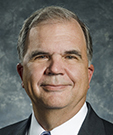By Jim Crowley
In an excellent editorial, Science editor-in-chief Marcia McNutt commented on preparation for non-academic careers [Science, 16 May 2014, Vol. 344, p. 672]. Noting an uptick in unemployment in 2010 data for Ph.D.s in science, technology, engineering and math (STEM) fields, she wrote,“Prospects for employment can be improved, however, for STEM Ph.D.s who make a concerted effort to learn about positions outside the lab and prepare themselves for alternative paths.” For the primary audience of Science – those in biomedical and related fields – “the lab” is understood to be an academic research lab.
McNutt’s recommendations, which include improving communication skills and learning to listen so as to understand how work in a field can be applied to “help meet the needs of others,” are also among the skills uncovered in the SIAM Math in Industry studies. For people in our community, learning certain computer skills can also enhance prospects in the non-academic career market. For more details, see the SIAM Math in Industry reports at http://www.siam.org/reports/.How is information on preparing students for possible non-academic careers conveyed to faculty and, in turn, students in our disciplinary fields today? Some in the SIAM community have long and successful track records in placing students in desirable jobs outside academia, but many others are unaware of the opportunities available or of steps that might be taken to better prepare their students for such careers.
In recent years, the National Science Foundation has placed an increasing emphasis on such questions. Workshops like INGenIOuS (Investing in the Next Generation through Innovative and Outstanding Strategies in the mathematical sciences) have explored new ideas for workforce initiatives.
A long-term goal of the workshop was to ensure that the next generation of undergraduate and graduate students views the mathematical sciences as a viable choice for study and career. The objective was to produce ideas that, if implemented, could help departments create a workforce that is ready to meet the challenges of the 21st century. The National Science Foundation’s Division of Mathematical Sciences (NSF/DMS) has a substantial workforce program. It was hoped that ideas from this workshop would help inform DMS about opportunities for new programs.
For another project, SIAM and the MAA, with support from NSF, are developing and disseminating information on non-academic career opportunities. The project, called PICMath (Preparation for Industrial Careers in Mathematics), is an effort to increase awareness among mathematical sciences faculty and undergraduates about non-academic career options; to provide research experience working on real problems from industry; and prepare students for industrial careers.
SIAM has also produced a series of Careers in Applied Mathematics brochures that spotlight careers outside academia.
With the goal of further introducing scientists to industrial math problems, SIAM organizes the Mathematical Problems in Industry workshop, which was recapped in an earlier blog post.
 |
Jim Crowley is the executive director of SIAM. |